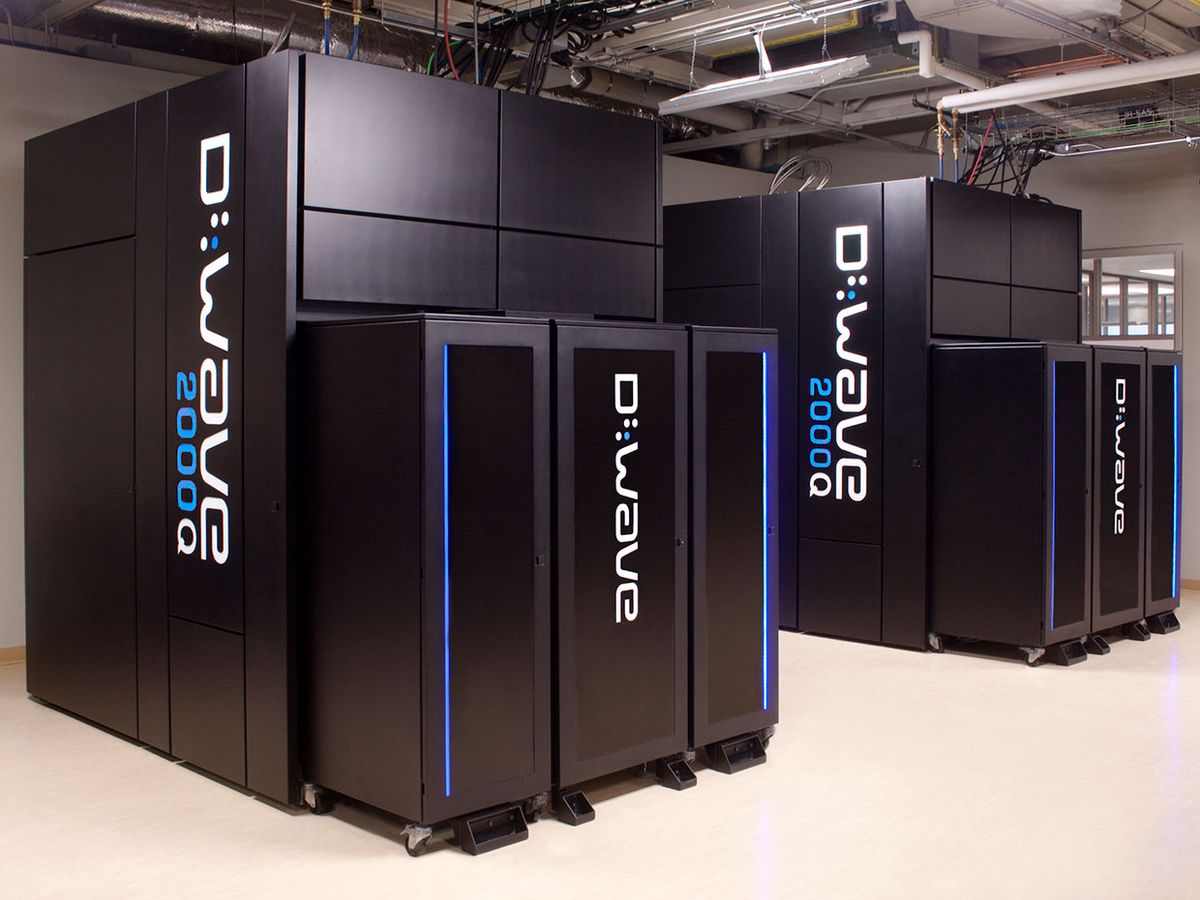Since at least 1982, when physicist Richard Feynman first proposed the idea of quantum computers, scientists have dreamed of using such exotic machines to simulate quantum phenomena in atoms and molecules. Now, in a paper to be presented in March, scientists at Volkswagen in Munich and San Francisco have used a D-Wave 2000Q quantum computer to solve rudimentary quantum chemistry problems.
The results, the VW scientists say, offer a proof of principle of Feynman’s vision using the increasingly popular Canadian quantum computer system. The paper they will present in March, which they shared on the preprint server arXiv, describes running D-Wave computations that find the ground state energies of molecular hydrogen and the molecule lithium hydride.
Both molecules are well known and well studied. What’s new is not any breakthrough chemistry discovery but rather an increasingly promising computational route to exploring chemistry in the quantum realm. (IEEE Spectrum covered a similar effort by IBM using a different kind of quantum computer system in 2017. )
“Our goal was to get a feeling for these kinds of problems to find better methods in the future,” says Florian Neukart, principal scientist at Volkswagen Group of America in San Francisco. The researchers did not run a similar algorithm on a conventional computer system to see whether the D-Wave computation was faster.
D-Wave computers are known as “quantum annealers,” running complex circuits using the machine’s 128,000 superconducting Josephson junctions. The integrated superconducting circuit, cooled down to thousandths of a degree above absolute zero, contains 2,048 quantum bits (qubits) and 6,016 interconnections (a.k.a. couplers) between qubits. It is called an annealer because the circuit begins in one state and then slowly transitions through to its final state, with its individual qubits representing distillations of an answer.
“Not all qubits are connected [between] each other,” Neukart says of the D-Wave computer’s architecture. “For future machines, increasing the number of qubits is not the only task, increasing the connectivity (i.e. the number of couplers) is important as well.”
In a full-fledged quantum computer, a quantum phenomenon called entanglement connects every qubit with every other qubit. However, the D-Wave quantum annealer is a quantum information device that’s on the way toward a full-fledged, universal quantum computer. It is not able to run every kind of quantum algorithm that a universal quantum computer could run.
That said, Neukart says, there’s plenty that D-Wave devices can do—often involving finding optimal solutions to complex problems. To date, D-Wave computers have been used for traffic analysis, selecting investments in financial portfolios, finding promising candidates for new drug development, and studying genomics and particle physics.
Simulating quantum systems like complex molecules, Neukart says, will probably not happen until the next generation of machines is available. The D-Wave’s 2,048 qubits, while impressive compared to other (universal) devices, are still not quite ideal to run full-fledged quantum chemistry simulations.
His group’s paper runs down a wish list of quantum chemistry simulations that sufficiently robust quantum computation should be able to tackle. Such problems include designing next-generation batteries, optimizing solar cells via detailed study of photosynthesis, and faithfully simulating complex molecules without resorting to approximations that conventional computers must rely on to make the simulations tractable.
The D-Wave can tick off none of these items on the wish list yet, he says. But larger and more interconnected quantum annealing devices may be able to approach such big problems. So the time is now, he says, to begin to understand how quantum chemistry problems run on a current generation D-Wave.
“Our present work was a first field study of quantum chemistry problems on quantum annealing devices,” he says. “Our goal was to get a feeling for the bottlenecks of the problem. This in the end helps [us] to understand the underlying problems, and find new solutions or suitable subproblems.”
Neukart says anyone looking to try their hand at their own quantum algorithms can start with D-Wave’s open-source libraries on GitHub. For beginners, he says, an actual D-Wave device isn’t even necessary. Simulations of D-Wave computations running on conventional computers are a good place to start.
“These [GitHub] libraries can be used to solve optimization problems,” Neukart says. “If access to the real chip is not available, a classical simulator can be used for first experiments. Therewith, everyone is able to learn about quantum annealing and to try it out.”
Margo Anderson is senior associate editor and telecommunications editor at IEEE Spectrum. She has a bachelor’s degree in physics and a master’s degree in astrophysics.



